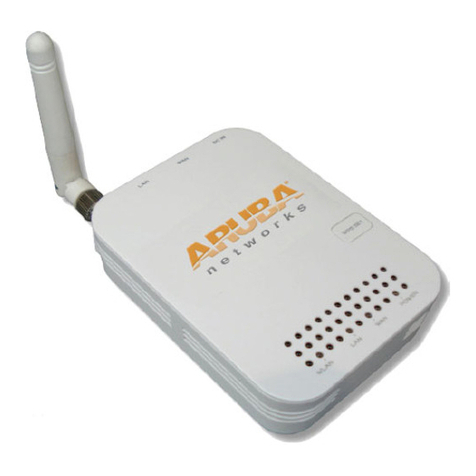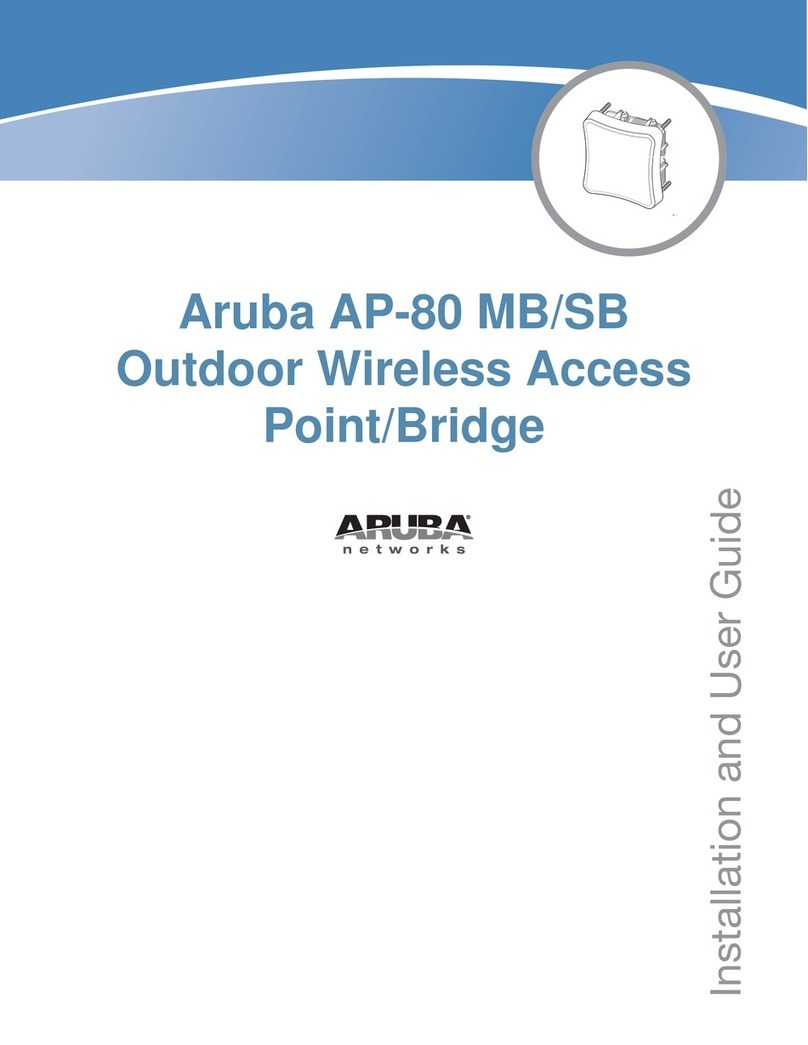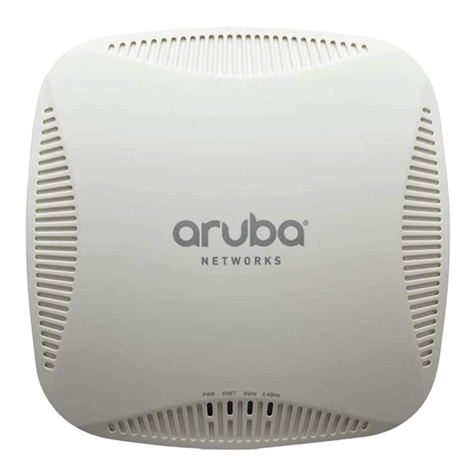Aruba Networks AP-270 Series User manual
Other Aruba Networks Wireless Access Point manuals
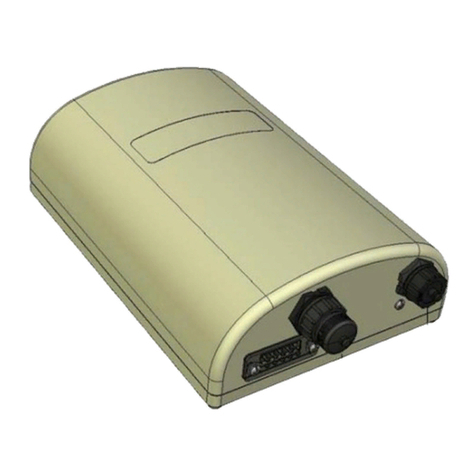
Aruba Networks
Aruba Networks AirMesh MST200 User manual

Aruba Networks
Aruba Networks IAP-114 User manual
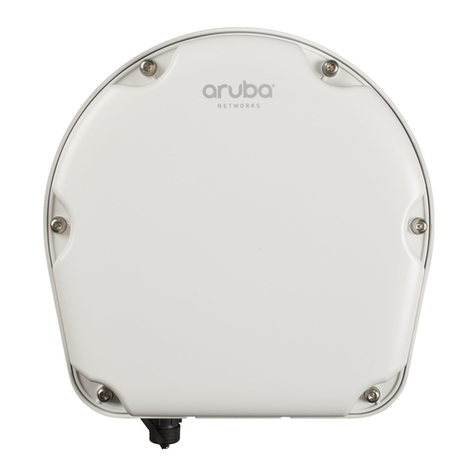
Aruba Networks
Aruba Networks 277 Series User manual
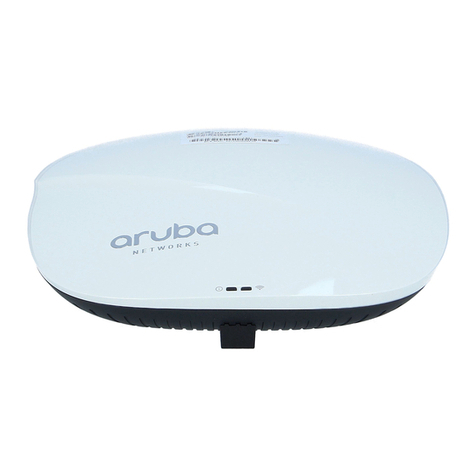
Aruba Networks
Aruba Networks AP-324 User manual

Aruba Networks
Aruba Networks AP-103H User manual
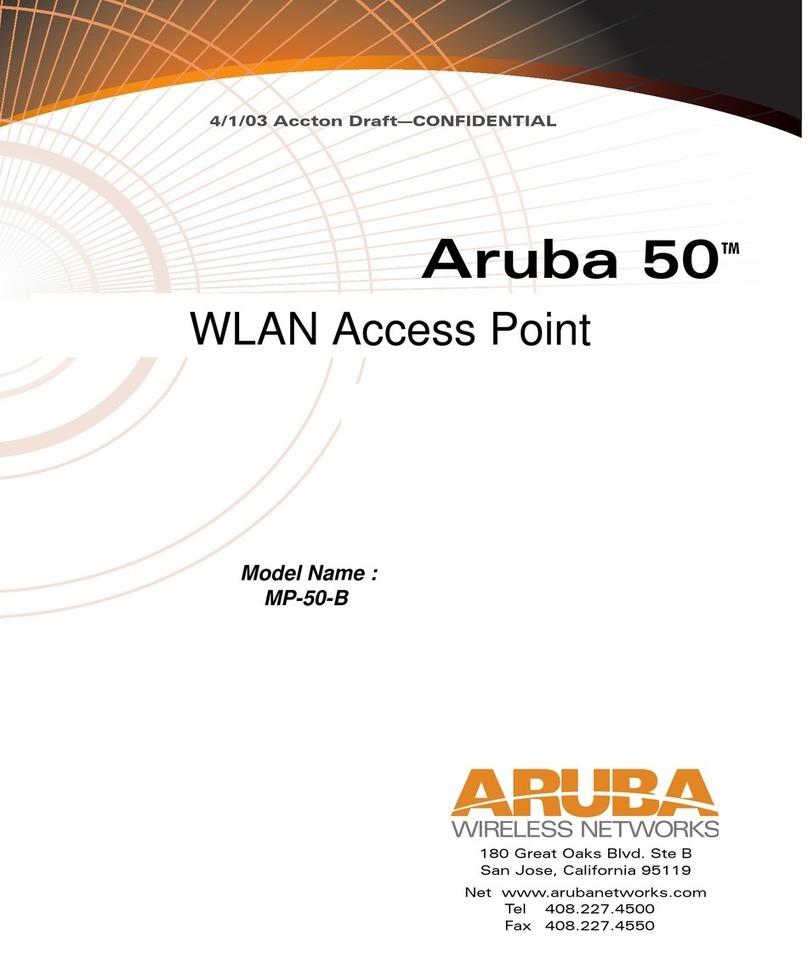
Aruba Networks
Aruba Networks MP-50-B User manual

Aruba Networks
Aruba Networks IAP-103 User manual
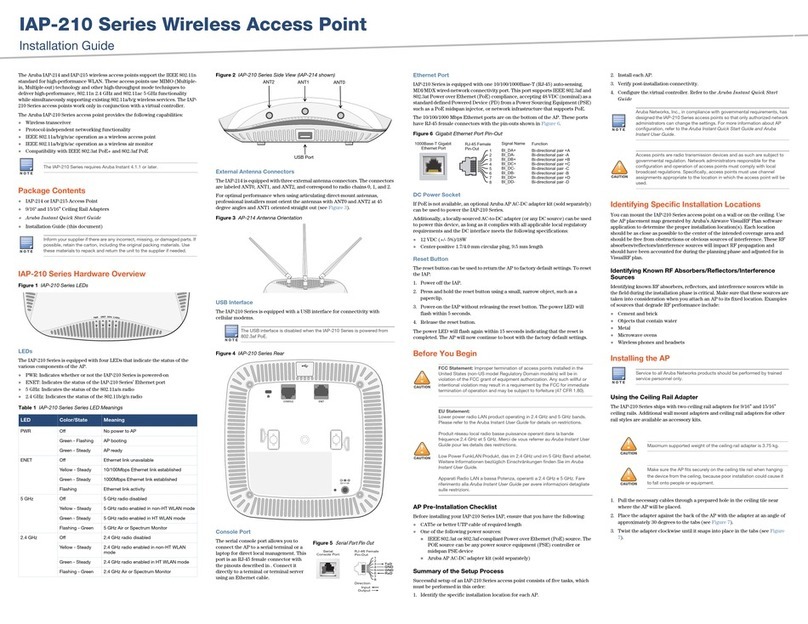
Aruba Networks
Aruba Networks IAP-210 Series User manual
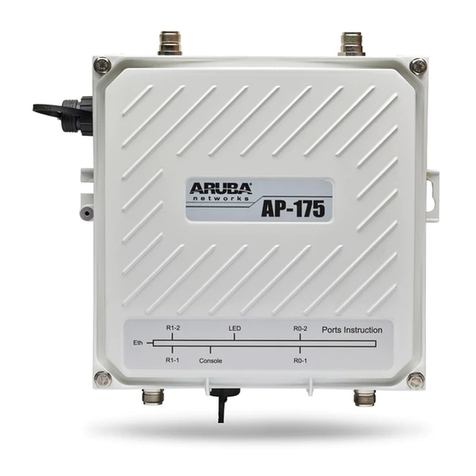
Aruba Networks
Aruba Networks IAP-175 User manual
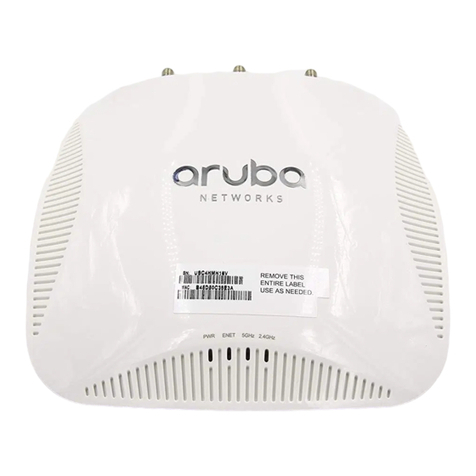
Aruba Networks
Aruba Networks AP-210 Series User manual
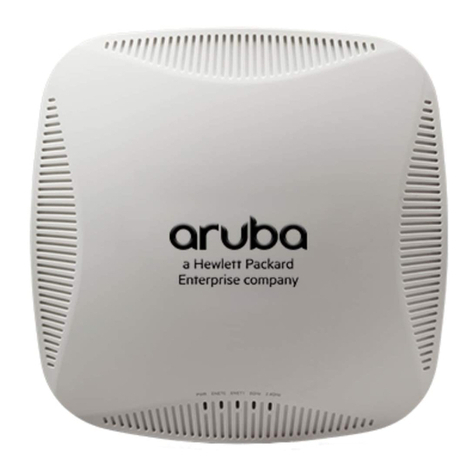
Aruba Networks
Aruba Networks AP-220 Series User manual
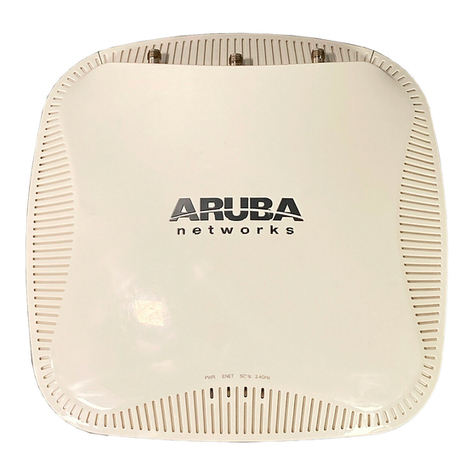
Aruba Networks
Aruba Networks AP-114 User manual

Aruba Networks
Aruba Networks AP-228 User manual
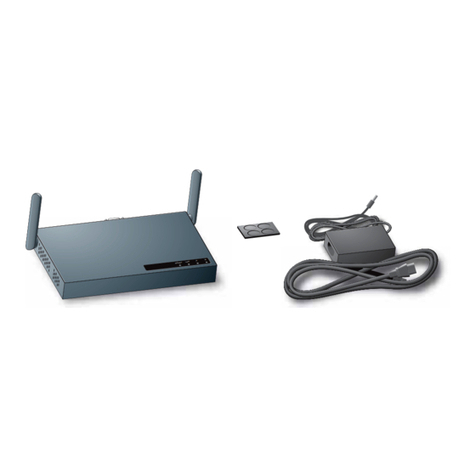
Aruba Networks
Aruba Networks Aruba 52 User manual

Aruba Networks
Aruba Networks IAP-130 Series User manual
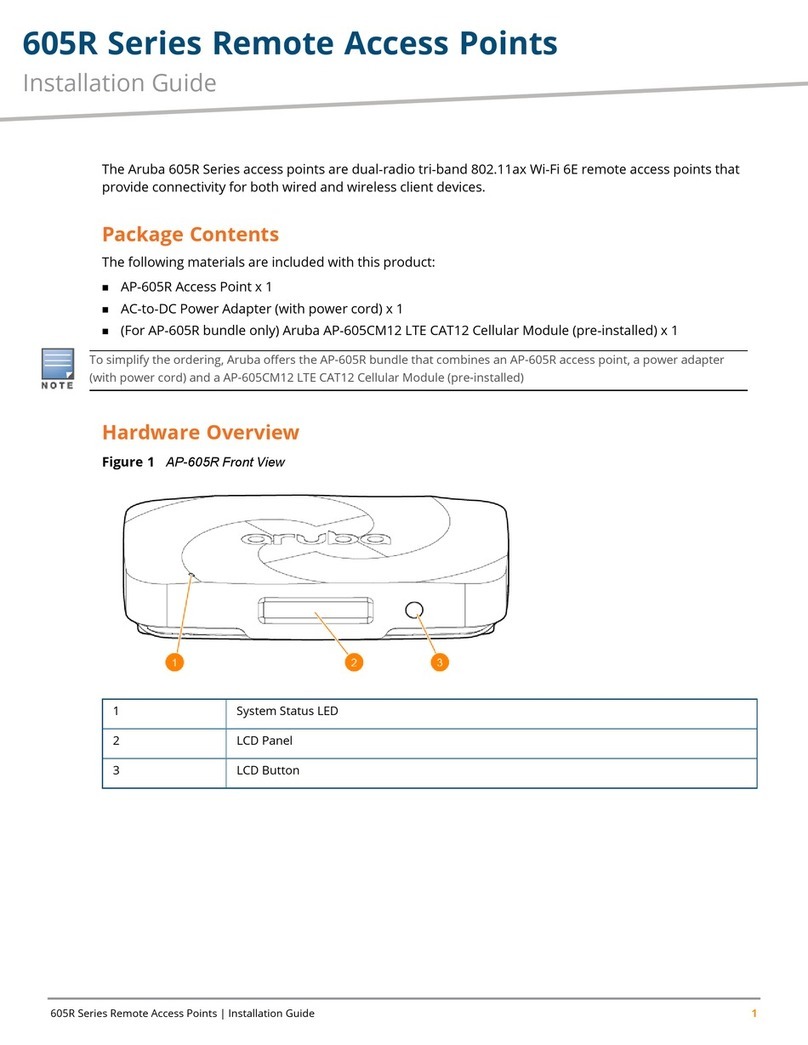
Aruba Networks
Aruba Networks 605R Series User manual
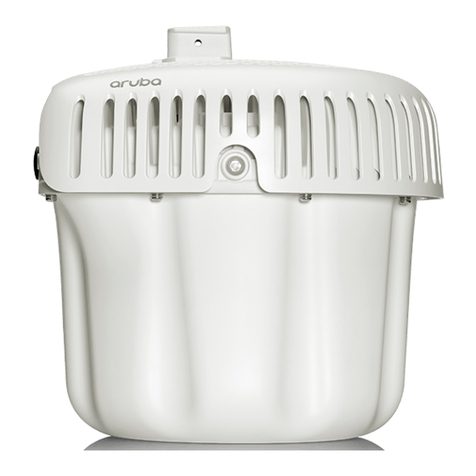
Aruba Networks
Aruba Networks AP-580 Series User manual

Aruba Networks
Aruba Networks AP-204 User manual

Aruba Networks
Aruba Networks AP-175 User manual
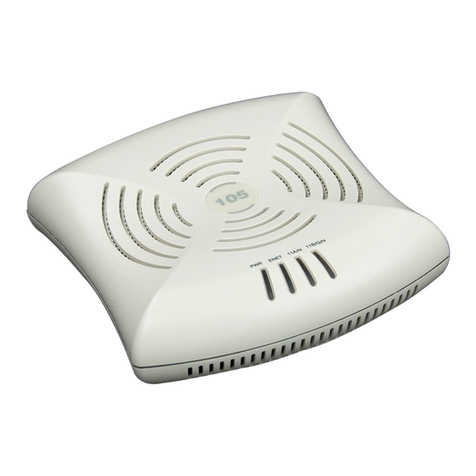
Aruba Networks
Aruba Networks IAP-105 User manual
Popular Wireless Access Point manuals by other brands

Monoprice
Monoprice MW301A user guide

D-Link
D-Link DWL-2700AP - AirPremier Outdoor Wireless Access... user manual

D-Link
D-Link DWL-2100AP - AirPlus Xtreme G Quick installation guide

TP-Link
TP-Link Auranet EAP225 Quick installation guide

D-Link
D-Link DWL-2100AP - AirPlus Xtreme G Quick installation guide

Ubiquiti
Ubiquiti NanoStation NSM2 quick start guide
